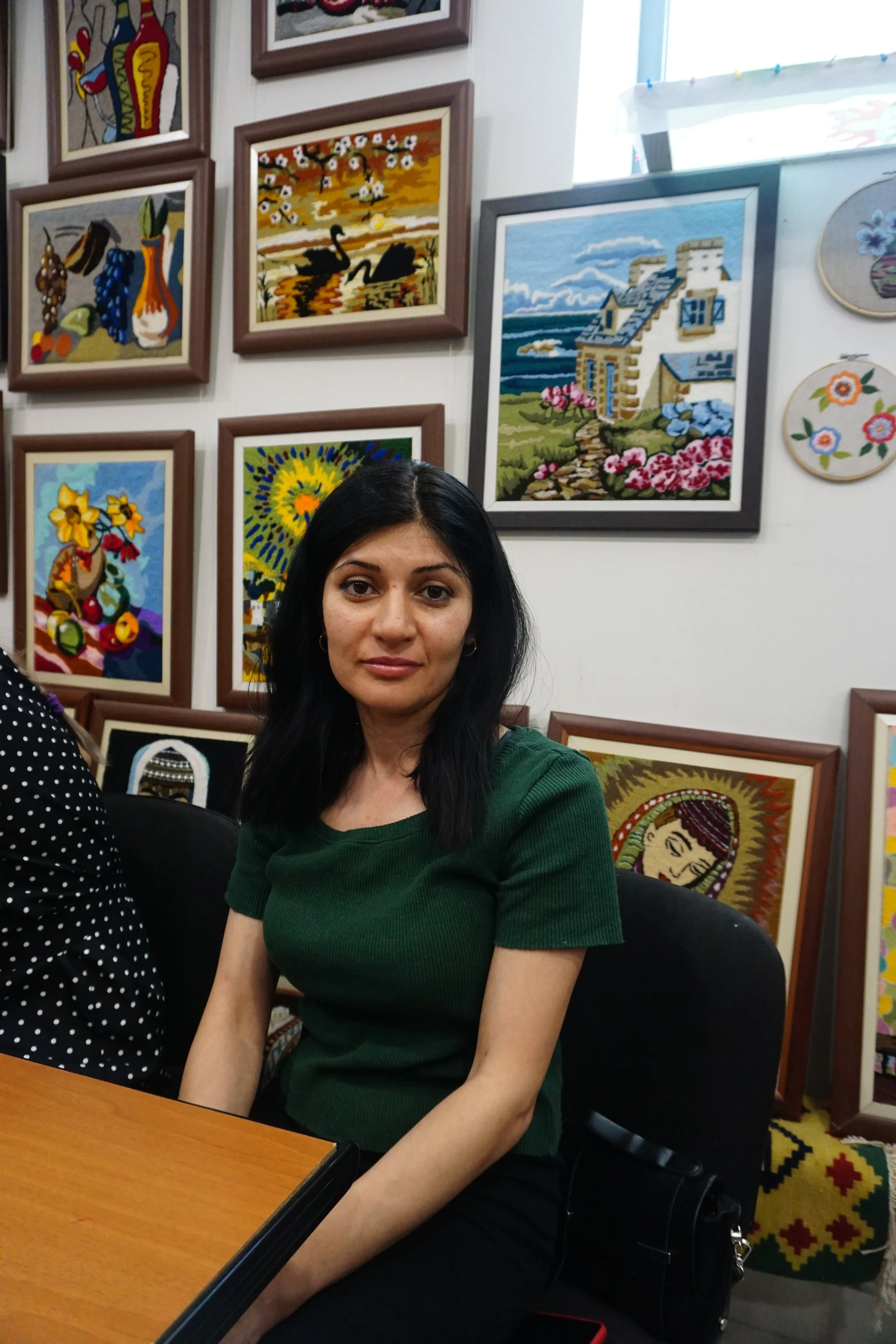My Promise to Ira
Noah Haas
UNHR supervisors and students meet with members of the Hadrut Children and Youth Creative Center. Lyanne Wang, June 2025.
September 2025
Sona was absent-mindedly knitting a shatal, a traditional bridal sock from the Hadrut region of Nagorno-Karabakh, when I sat down next to her. It was an early July afternoon at the Hadrut Children and Youth Creative Center, located in a suburban neighborhood of the Armenian capital, Yerevan. A student at Wesleyan University and researcher with the University Network for Human Rights, an organization that brings U.S. students on human rights fact-finding missions, I was part of a team visiting Armenia this past summer to document the ongoing effort to preserve the culture of the people of Nagorno-Karabakh, or Artsakh, in the wake of their 2023 mass exodus from their homes.
At first, I was nervous to talk to Sona. I didn't know how to talk to someone who had been through so much, in Armenian, a language I don't speak at all (though I grew up 20 minutes from Glendale, California, the largest Armenian community in the United States). But as I sat with her, surrounded by the vibrant colors and varied textures of Artsakh culture, she generously shared with me and my colleagues her story and the significance of the center in her life.
Sona at the Hadrut Youth and Children Creative Center. Emily Wilder, June 2025.
Sona is from Martuni, a town in Nagorno-Karabakh, the ethnically Armenian enclave within Azerbaijan that was the epicenter of decades of dispute and military conflict between Azerbaijan and Armenia. She and the dozen other women sitting around the table, knitting and embroidering, were among the 150,000 people who had fled their homes since the conflict reignited in 2020, including 100,000 people who fled over ten days after an Azerbaijani military offensive in 2023 in an event that numerous human rights organizations called an ethnic cleansing. While the recent peace makes no mention of any right of return for displaced Artsakhtsis, the Hadrut Center serves as a living space of Artsakh in exile — a place where people nurture their culture while hoping one day they may truly return.
The Hadrut Center offers a space for Artsakhtsi people to continue making their traditional crafts, along with professional development courses and art classes for Artsakhtsi children, all provided free of charge. Ira Tamrazyan, the woman behind the Hadrut Center, has seen it move five different times since the beginning of the 2020 war. Though it began in and for Hadrut, the center's artistic offerings have come to span all of former Artsakh. Now, it's not war that threatens its existence. The center is struggling amidst a chronic lack of external financial support. Everyone working at the center is a volunteer; Ira said it is always uncertain whether they will make rent for the space each month, and though they accept donations, they don't receive enough, including from the Armenian diaspora. The space, as well as the emotional and communal support that it provides for the victims of the mass trauma, is at risk.
Like Sona, other women we spoke to at the center echoed the tangible and intangible impacts this place has on their lives. In addition to making the traditional shatal, the women were embroidering various pieces ranging from table runners to dance uniforms. Nazik Hayriyan, another woman we spoke to at the center, described how she learned to make pottery and knit there, and now she teaches these classes. Many of the women at the center are encouraged and equipped to sell their pieces at fairs or work on commission. This professional development and education extends to the children who frequent the center, running around or sitting in clusters, speaking the Artsakhi dialect in animated voices. In the room next to us, Sona's husband was teaching a dozen or so children how to code on computers.
To me, the closeness of the community and the support the Hadrut Center provided these women felt the most impactful. This place is one of the few where not only the children, but also the adult Artsakhtsi refugees, can speak in their unique dialect and be surrounded by people from their hometowns — whom they knew before the 2023 forced displacement, or whom they've met since. "It feels like you're home," Nazik said of the center — and for these women, home has been hard to come by.
The center is "an environment that makes you feel close to your homeland," Sona said. "All of this is thanks to Ms. Ira."
Though Ira was gracious enough to invite us into the center, let us take pictures, and speak to the women, making us coffee and feeding us cookies and fresh cherries all the while, she also challenged our presence there. We might come to witness their work for the afternoon, but their lives—and their struggles—persist after we walk back out the doors.
Ira then posed our group the question: How will you bring our story back to your communities and help us? In response, I promised to share the center's story with my community back in Los Angeles. As I mounted the steps from the craft room up to the busy Yerevan boulevard, I felt empowered to, in Ira's words, "stir up" people back in the United States and show them that the struggle for survival is ongoing for the people of Artsakh, and that they need others to help.


